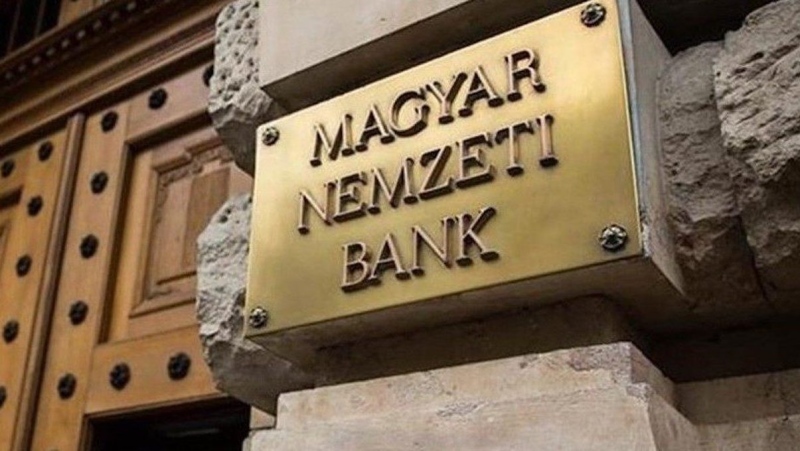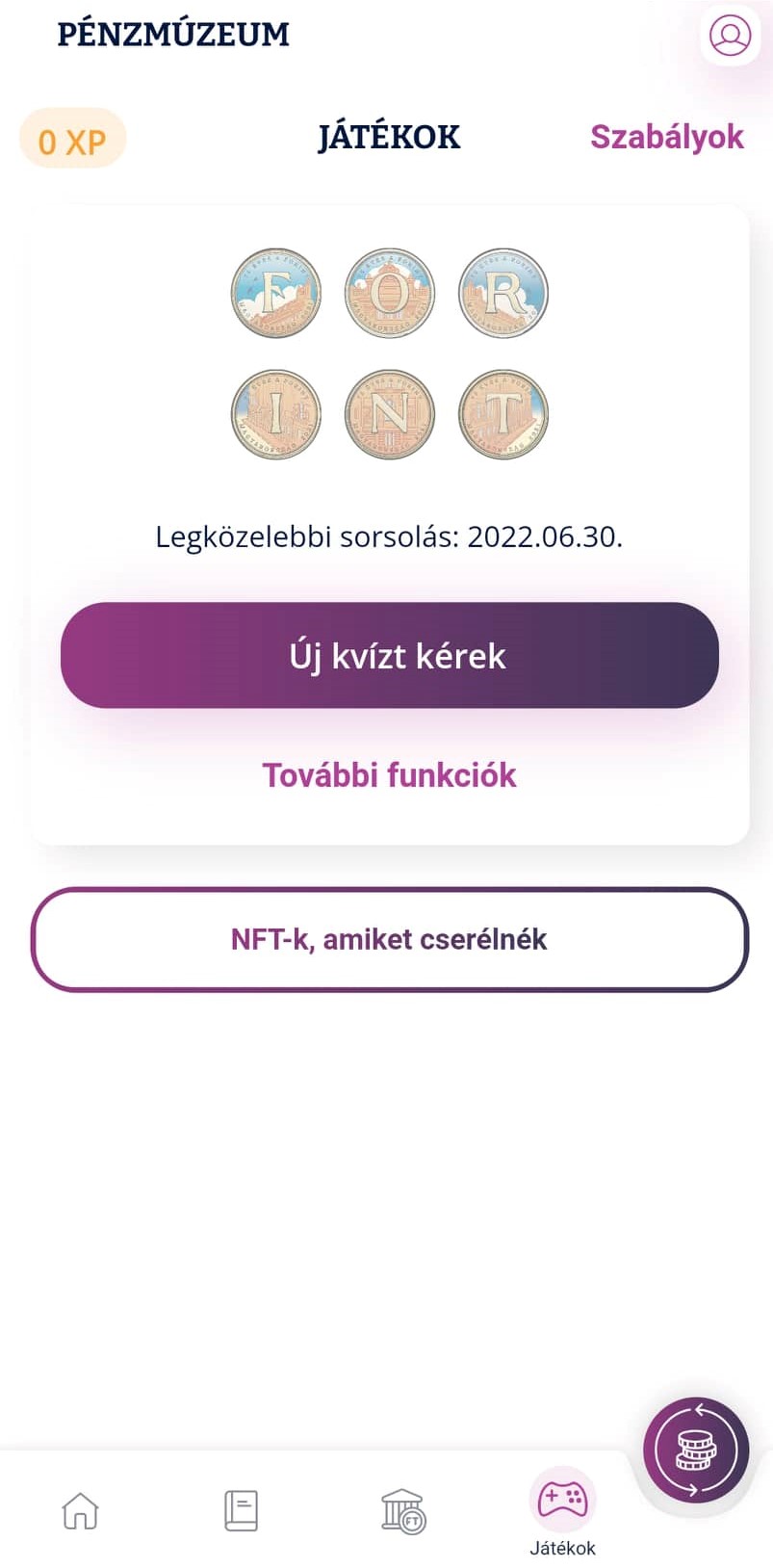Central Bank of Hungary launches its own NFT collection

On International Museum Day last Wednesday, Magyar Nemzeti Bank (Hungarian National Bank, the central bank of Hungary) launched its new mobile application. Within the app, a novelty feature was also introduced: a private blockhain-based, NFT issuance platform and coin registration.
The new application, called Pénzmúzeum (Money Museum) serves two main purposes. On one hand, it’s an interactive museum app that provides additional information for museum visits as well as articles, posts and educational materials. On the other hand, it’s a test for blockchain technology as the app has its very own integrated NFT issuance platform.

The first NFT collection is based on the 5-forint coin which celebrates its 75th birthday this year. Source: Pénzmúzeum app
As of now, the NFTs cannot be purchased: users can only win and collect them by completing quizzes and games about finance, economics and the history of money. The first collection available from the app is based on the collector version of the 5-forint coin. Users can collect all 6 letters from FORINT and can even trade NFT letters between them. (Once you collect all six letters from the forint NFT series, you can enter a prize game where you can win physical collector coins.) The questions range from easy to hard and deal with topics such as “When was the Forint introduced in Hungary?” and even more general ones such as “What do people get paid when they are sick?”.
Physical collector coins can also be registered on the central bank’s new private blockchain. In the future, owners will be able to scan the QR code of the coin from its packaging and register it on the blockchain. The first coin featuring this special QR code can be acquired as the main prize for the aforementioned first forint NFT series.
The Pénzmúzeum opened its doors this March and has already welcomed over 15 thousand visitors. Besides special coin collections, fintech innovations are also a prominent part of the exhibition with a special attention to central bank digital currencies.